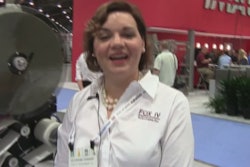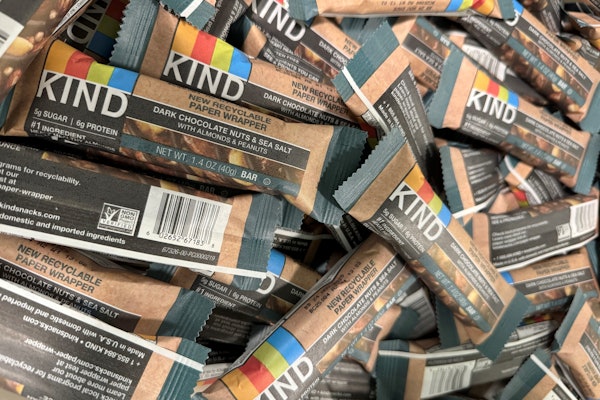
This is the analogy used by the folks at Landa Corp. to describe how much richer the colors will be on printed packages once their Nanography technology emerges from its currently pre-commercial stage. According to Landa, packages printed with conventional inks, including those printed on digital presses, will look like an image projected in a well-lit room. Packages printed nanographically will look like an image projected in a darkened room.
Based on nanotechnology—the science of ultra-small particles—Nanography is a form of digital printing that relies on nano-sized pigments that are superb at absorbing light. This is why the images printed nanographically have the richness they do.
Equally impressive, Nanography is substrate-agnostic, and the substrate does not require special pretreatments to get the nanoinks to adhere. At a press breakfast briefing with Landa Corp. founder Benny Landa during Print 13 here in Chicago, we were shown a perfectly good image printed on an uncoated paper towel. “There is no transfer of ink to substrate,” explained Landa. “We dry the ink on a belt and then transfer it to the substrate to be printed. Since the ink is no longer liquid when it reaches the substrate, it doesn’t matter what that substrate is.”
Landa says that even though digital printing has grown exponentially, it’s still barely scratched the surface of the marketplace. He says Nanography will take digital printing mainstream because it combines the versatility and short-run economics of digital printing with the low cost-per-page and high productivity of offset printing.
The first commercial user of Landa’s S10FC nanographic press is expected to be in production with folding cartons in Q4 of 2014. “The opportunities for conversion to digital are enormous,” said Landa at the press briefing. Many of those opportunities, he added, are in packaging, where inventories can be minimized, packaging can be personalized, and the cost of printing can be reduced.
Elsewhere at Print 13 was a one-of-a-kind wide-format digital sheet-fed press from Xante. Called the Excelagraphix 4200P, it uses Memjet Waterfall Printhead Technology for four-color printing of sheets up to 42 in. wide. Sheet thickness can be up to 5/8 in, and print speed is up to 12 in/sec.
The unusual press was introduced to the U.S. in April, and its first user here is a supplier of corrugated packaging, including pizza boxes. The firm can now send its pizzeria customers boxes that carry not only four-color graphics but also advertising for local businesses—insurance agents, hair salons, auto repair shops, you name it. The pizzeria shops could never have entertained such a thing back when they were ordering generic boxes flexo-printed in one or two colors in minimum orders of at least 5,000. But it’s easy enough when the boxes are printed on a digital press that requires no plates or make-ready time and can crank out boxes in quantities as low as 300 before moving immediately to the next job. The four-color boxes in small runs cost twice as much, but the pizzeria shops offset that upcharge by selling advertising on their boxes and by not having to inventory so many boxes at once. It’s a win-win for the box producer and the box buyer.
By the way, kudos to Xante for donating an Excelagraphix 4200 to the Graphic Communication Institute at Cal Poly San Luis Obispo. “This printer is a perfect fit for our students’ packaging innovation projects,” says Colleen Twomey, a packaging specialist and assistant professor of graphic communications. “Within seconds, students can prototype on flexible and rigid media in beautiful full-color graphics. We are delighted to work with such state-of-the-art technology.”

























